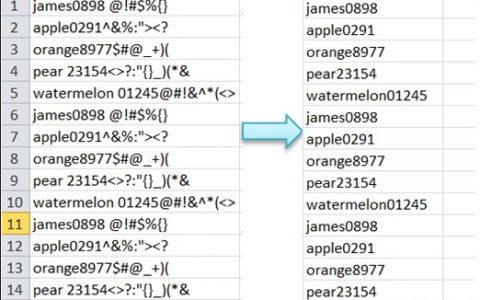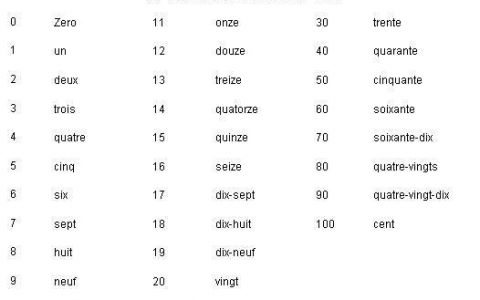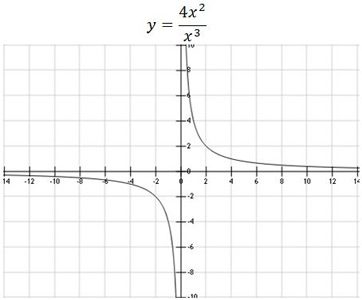Companies pay employees in every profession at the end of the month. Salary is the term for this remuneration. They usually include their remuneration in contract as well as on their payslip.
There are numerous components to a wage that may fluctuate between employers. The following is a list of the most typical salary structure breakdowns. Wage computation aids in determining your net salary after taxes. It also takes into account any incentives and deductions. You must mention the total bonus as well as the gross salary. Then, the calculator will calculate CTC, and the amounts of basic salary, HRA and other allowances. It will also calculate provident fund and professional tax deductions, total deduction, net salary, income tax. However, the calculator will display net salary after income tax deduction. This article is based on ” Calculation Salary.”
What is Salary?
The employer pays the employee on a regular basis for the work performed. Salary is the phrase for such a regular payment. The salaries, which are normally paid once a month, are specified in the job contract. We can explain the wage structure in the following divisions:
Calculation salary: Basic Salary
The employee’s basic income is roughly 40% to 50% of his or her total wage. The employee gets compensated for his skill, experience, and credentials by the company. The basic salary is a set amount that is included in the CTC (Cost To Company) package.
Calculation salary: House Rent Allowance (HRA)
It is a portion of the compensation that an employer provides to employees who live in rented housing. Section 10(13A) of the Income Tax Act exempts the house rent allowance (HRA) in part or entirely from taxation. If you don’t live in rental housing, though, HRA is fully taxable.
Calculation salary: Leave Travel Allowance (LTA)
The business gives a leave travel stipend to employees to cover travel expenditures. To be eligible for the reimbursement, employees must show proof of travel. Section 10(5) of the Income Tax Act allows a salaried employee to claim the LTA exemption.
Special Allowance: The special allowance is a component of your wage structure that is fully taxable.
Calculation salary: Bonus
The bonus is a performance reward that an employer pays to the employee. They include it in the gross salary and is completely taxable in the hands of the employee. This article is based on ” Calculation Salary.”
Calculation salary: Employee contribution to the provident fund
The employee and the employer each contribute 12% of the employee’s base salary to the EPF (employee provident fund) each month. The contribution paid by the employee to the EPF is deductible under Section 80C of the Income Tax Act of 1961.
Calculation salary: Professional Tax
Professional tax is a state-imposed tax on employment. In a financial year, the state can impose a maximum of Rs 2,500 as a professional tax.
Calculate salary monthly take-home
Your monthly take-home pay is the amount left over after all deductions have been deducted from your gross income. Let’s look at some instances to help us comprehend the calculations. Assume your annual CTC is Rs. 10 lakhs, and the employer provides you a bonus of Rs. 50,000 every year. As a result, your total gross income will be CTC – bonus = 10 lakhs minus 50,000 = 9.50 lakhs.
After that, you must deduct the annual professional tax from your gross salary. The tax amount differs from one state to the next. We’ll suppose it’s 2,500 in your area for this example.
The entire EPF contributions made by you and your employer must then be deducted. The company always matches the employee’s EPF contribution. As a result, the total will remain the same. Your EPF contribution will be equal to 12% of your maximum monthly salary limit of $15,000 = $1,800 per month. As a result, your yearly EPF contribution will be $21,600. Your company will also contribute $21,600. This article is based on ” Calculation Salary.”
Assume you additionally have a 3,000-dollar annual deduction for employee insurance.
So, your total removal = skilled tax + your donation to EPF + the company’s tribute to EPF + employee insurance = $2,500 + $21,600 + $21,600 + $3,000 = $48,700.
Your total yearly take-home salary = gross salary – total deductions = 9.50 lakhs – $48,700 = $9,01,300.
Now, your monthly take-home salary = annual salary/12 = $9,01,300/12 = $75,108.
Most people in India choose the take-home salary calculator to avoid the laborious calculations. If you use the tool, it will quickly calculate the sums from the following computations and display the results.
Difference between CTC and gross salary
The total cost of acquiring and keeping employees, also known as CTC, is the overall cost to the company. Your CTC covers your income as well as all other benefits provided by your employer, such as EPF, HRA, medical insurance, and other allowances. Cab service, subsidised loans, meal coupons, and other services may be included in CTC.
As a result, CTC is your employer’s entire cost of maintaining your services. The fee varies by company and is determined by the quantity of benefits provided. Furthermore, the CTC affects your take-home pay.
The gross pay, on the other hand, is the amount left over after deducting gratuity and EPF from the CTC. Because the amount is computed before deductions such as EPF contribution, taxes, and others, your gross salary will always be larger than your take-home salary.
Holiday bonuses, overtime pay, and any other additional compensation granted by the company are included.
You’ll need to know your gratuity and EPF amounts to figure out your gross compensation. This article is based on ” Calculation Salary.”
Calculation Salary: Gross salary
The technique for calculating the Net Salary (In Hand Salary) is outlined below:
You must first determine the Gross Salary. Your gross compensation is neither your CTC nor your basic wage. By removing the gratuity and the Employees’ Provident Fund (EPF) from the CTC, you may get the gross salary.
Gross Salary = CTC – EPF – Gratuity. It’s an easy way to calculate salary.
Calculation Salary: Gratuity
The following is the formula for calculating gratuity:
Gratuity = (Basic salary x Dearness Allowance) x 15/26 x Number of years of service
The Gratuity that is subtracted every year = 15/26 x Basic Salary (per month)
The taxable income must then be calculated. By removing Tax Saving Instruments, Professional Tax, Medical Insurance, House Rent Allowance (HRA), and Tax-Free Allowance from Gross Salary, Leave Travel Allowance (LTA), taxable income can be calculated.
Taxable Income = Gross Salary – EPF/PPF involvement – Tax-Free Allowance – HRA – LTA – Medical Insurance – Tax Savings Instruments – Other Deductions. This article is based on ” Calculation Salary.”
Calculate salary from basic pay
The process for calculating your income according to the 7th CPC is straightforward. The salaries are calculated by multiplying the existing basic pay by a factor of 2.57, then adding all applicable allowances such as Transport Allowance (TA), House Rent Allowance (HRA), Medical Allowance, and so on to arrive at the final sum.
Calculate salary from ctc
You must enter the Cost To Company (CTC) and any bonuses, if any, as a set amount or a percentage of the CTC to compute the take-home wage.
Your Cost To Company (CTC) is Rs 8 lakh, for example. For the fiscal year, your employer awards you a bonus of Rs 50,000. Then your total gross salary is Rs 8,00,000 minus Rs 50,000, which equals Rs 7,50,000. (the bonus is deducted from the Cost to Company).
Rs 8,00,000 – Rs 50,000 = Rs 7,50,000 gross salary.
The professional tax of Rs 2,400 per year is deducted from the total salary (this is the professional tax in Karnataka). It then deducts both the employer’s and your (employee’s) contributions to the Employee Provident Fund (EPF). This article is based on ” Calculation Salary.”
EPF contributions are calculated based on a monthly salary cap of Rs 15,000 per month. It works out to Rs 1,800 per month or Rs 21,600 per year when 12 percent of Rs 15,000 is deducted.
Read Also: Easement Appurtenant: Definition, Features & Examples
So, the employee makes a yearly contribution of Rs 21,600 to the EPF, and the employer makes a comparable contribution of Rs 21,600 to the EPF (8.33 percent of the employer’s contribution being diverted to the employee pension programme). Furthermore, you are entitled to a yearly deduction of Rs 3,000 for employee insurance.
Professional tax + EPF (Employee Contribution) + EPF (Employer Contribution) + Employee Insurance = Total Deductions.
Total Deductions = Rs 2,400 + Rs 21,600 + Rs 21,600 + Rs 3,000 = Rs 48,600.
Take-Home Salary = Gross Pay – Total Deductions
Take-Home Salary = Rs 7,50,000 – Rs 48,600 = Rs 7,01,400. It’s an easy way to calculate salary.
Calculate salary increase percentage
Salary calculation steps:
Multiply your present wage by the percentage of your raise. Take the result and multiply it by 100. Then double the result by your current pay.
For instance, if someone is paid $10,000 and the percentage of increase is 20%, the computation should be: 10000 × 20 / 100 + 10000 = 12000. It’s an easy way to calculate salary.
Calculate salary 7th CPC
The Annual Increment is maintained at 3% in the 7th CPC Report. Individual basic pay, on the other hand, does not need to be calculated at three percent of the total. Simply locate the value’s next cell in the Pay Matrix Table.
For example, if an employee’s basic pay in pay matrix level 7 is Rs. 52000, his annual increment will be the following cell in the same level, which is Rs. 53600.
| GP | 4200 | 4600 | 4800 | 5400 |
| L | 6 | 7 | 8 | 9 |
| 1 | Then, 35400 | Similarly, 44900 | Then, 47600 | Similarly, 53100 |
| Then, 2 | Similarly, 36500 | Then, 46200 | Similarly, 49000 | Then, 54700 |
| Then, 3 | Similarly, 37600 | Then, 47600 | Similarly, 50500 | Then, 56300 |
| Similarly, 4 | Then, 38700 | Similarly, 49000 | Then, 52000 | Similarly, 58000 |
| Similarly, 5 | Then, 39900 | Similarly, 50500 | Then, 53600 | Similarly, 59700 |
| Then, 6 | Similarly, 41100 | Then, 52000 | Similarly, 55200 | Then, 61500 |
| Then, 7 | Similarly, 42300 | Then, 53600 | Similarly, 56900 | Then,63300 |
| Similarly, 8 | Then, 43600 | Similarly, 55200 | Then,58600 | Similarly, 65200 |
| Similarly, 9 | Then, 44900 | Similarly, 56900 | Then, 60400 | Similarly, 67200 |
| Then, 10 | Similarly, 46200 | Then, 58600 | Similarly, 62200 | Then, 69200 |
Although the real increment is Rs. 1560, the cell value is Rs. 1600. More than 3% is Rs. 40.
Level 7 of the Pay Matrix
52000 is the current basic pay (Cell 6)
53600 is the next basic pay (Cell 7)
Amount of Enhanced Increment: 1600
3.08 percent Enhanced Increment Percentage
three percent Gain 40 by increasing the amount by 1560. It’s an easy way to calculate salary.
Calculate Salary After DA Hike
The DA (Dearness Allowance) is the most important component of a government employee’s wage package. This increase occurs twice a year to compensate for increases in the price of key items.
The DA computation is straightforward. Dearness allowance is the current rate of Dearness allowance multiplied by your basic income. If your basic pay is Rs. 49000, for example, the current percentage rate is 12 percent. (49000 x 12) /100 is the DA.
You’ll need to have the 18 months of preceding AICPIN data if you want to compute the exact proportion of ‘DA from January’ or ‘DA from July’ of any year. For example, if you want to know the September 2019 DA %, you’ll require AICPIN data from October 2018 to September 2019. From October 2019, the % will be in effect.
Dearness Allowance (DA) and Dearness Relief (DR) are the same thing (DR). However, the DA applies to current government employees, whereas the DR applies to retired government personnel (pensioners).
The DA is determined by their basic wage, whereas the DR is determined by their basic pension. If an employee’s basic pay is 18000 dollars and a pensioner’s basic pension is 9000 dollars, the DA and DR will be calculated as follows:
Basic Salary: 18000 x 21% = 3780
Basic Pension: 9000 x 21% = 1890
DA from January 2018: DA from the 6th CPC in January 2018 is 142 percent, and DA from the 6th CPC in July 2018 is 148 percent. It’s an easy way to calculate salary.
Calculate Salary Hike
Steps:
1st step: Determine the decimal value of the salary increase % (i.e. salary percentage divided by 100).
Step 2: Multiply the decimal value by the CTC currently in use.
3rd step: Now double your current CTC by the final value.
Step 4: The updated salary value is finally presented.
Consider the following scenario:
How to calculate a 30% hike on 28000?
First find the decimal value of 30% is 30/100 = 0.30
Then multiply the 0.30 into 28000 = 0.30 * 28000
Then you got 8400.
And add the 8400 + 28000 = 36400
Hence, New Salary is 36400. It’s an easy way to calculate salary.
Calculate Salary per Day
You can use an online net daily earnings calculator to make this process easier, but it only takes a few minutes to perform the arithmetic. The formula for calculating compensation per day is straightforward.
To calculate the weekly pay spread for the entire year, multiply the salary by 52*. For example, dividing a $60,000 annual pay by 52 weeks yields $1,153.85 per week in employee earnings.
After that, divide it by the number of weeks worked. The standard work week is five days, hence this employee’s daily wage is $230.77 dollars. Depending on your preference, you can calculate the net wage after taxes or the gross salary before taxes.
The daily rate of monthly paid employees is useful for determining the worth of a position in comparison to the daily pay structure.
Calculate Salary per Month
The calculation is simple if you are paid an annual salary. Gross income, which is how an annual pay is commonly defined, refers to the entire amount you make before taxes and other deductions. Simply divide the total amount of money you are paid for the year (salary) by 12.
For example, if your annual salary is $75,000, the formula calculates that your gross monthly income is $6,250.
Because many people get paid twice a month, knowing your biweekly gross income is also useful. Simply divide your monthly gross revenue by two to get this figure.
Using the same example as before, divide $6,250 by two to get $3,125 as your biweekly gross income.
If you’re paid hourly, you’ll need to figure out your gross monthly income. It’s an easy way to calculate salary.
The equation is a little more complicated for hourly employees. To calculate your annual salary, multiply your hourly income by the amount of hours you work each week, then divide by 52. Divide your annual gross revenue by 12 to get the monthly amount. Calculate salary.
If you earn $15 per hour and work 40 hours per week, your weekly gross salary is $600. Multiplying this figure by 52 yields a gross annual income of $31,200. Finally, dividing by 12 yields a monthly gross income of $2,600.
FAQs about Calculation Salary
What do I need to know to use the salary calculator?
Only your gross pay and total bonus should be known. Once you’ve entered your information, the calculator will quickly provide the remaining salary components. It’s an easy way to calculate salary.
How does the calculator determine the basic pay?
We calculate the basic compensation as a percentage of the CTC. You can adjust the proportion to meet your needs to calculate salary.
Can I find the TDS on the salary calculator?
We don’t calculate the TDS separately in the salary calculator. You can find the TDS amount easily on your pay stub.
Does the salary calculator show the deductions?
Yes, the calculator shows the professional tax and provident fund deductions. It also shows the overall amount of deductions.
The salary calculator for in-hand is a free tool that you can use at any time. Its robust mechanism provides you with the information you seek in a timely and error-free manner. When using the calculator, make sure you enter the correct numbers to get accurate results.
How to calculate the pay scale?
The process for calculating your income according to the 7th CPC is straightforward. We calculate the salaries by multiplying the existing basic pay by a factor of 2.57, then adding all applicable allowances such as Transport Allowance (TA), House Rent Allowance (HRA), Medical Allowance, and so on to arrive at the final sum.
How to Calculate Salary Gross Amount?
The following is a step-by-step guide to calculating Net Salary (Inhand Salary):
You must first determine the Gross Salary. Your gross compensation is neither your CTC nor your basic wage. By removing the gratuity and the Employees’ Provident Fund (EPF) from the CTC, you may get the gross salary.
CTC – EPF – Gratuity = Gross Salary
What is the formula for calculation salary?
The formula for calculating net salary is straightforward. Gross Salary – Deductions = Net Salary.



